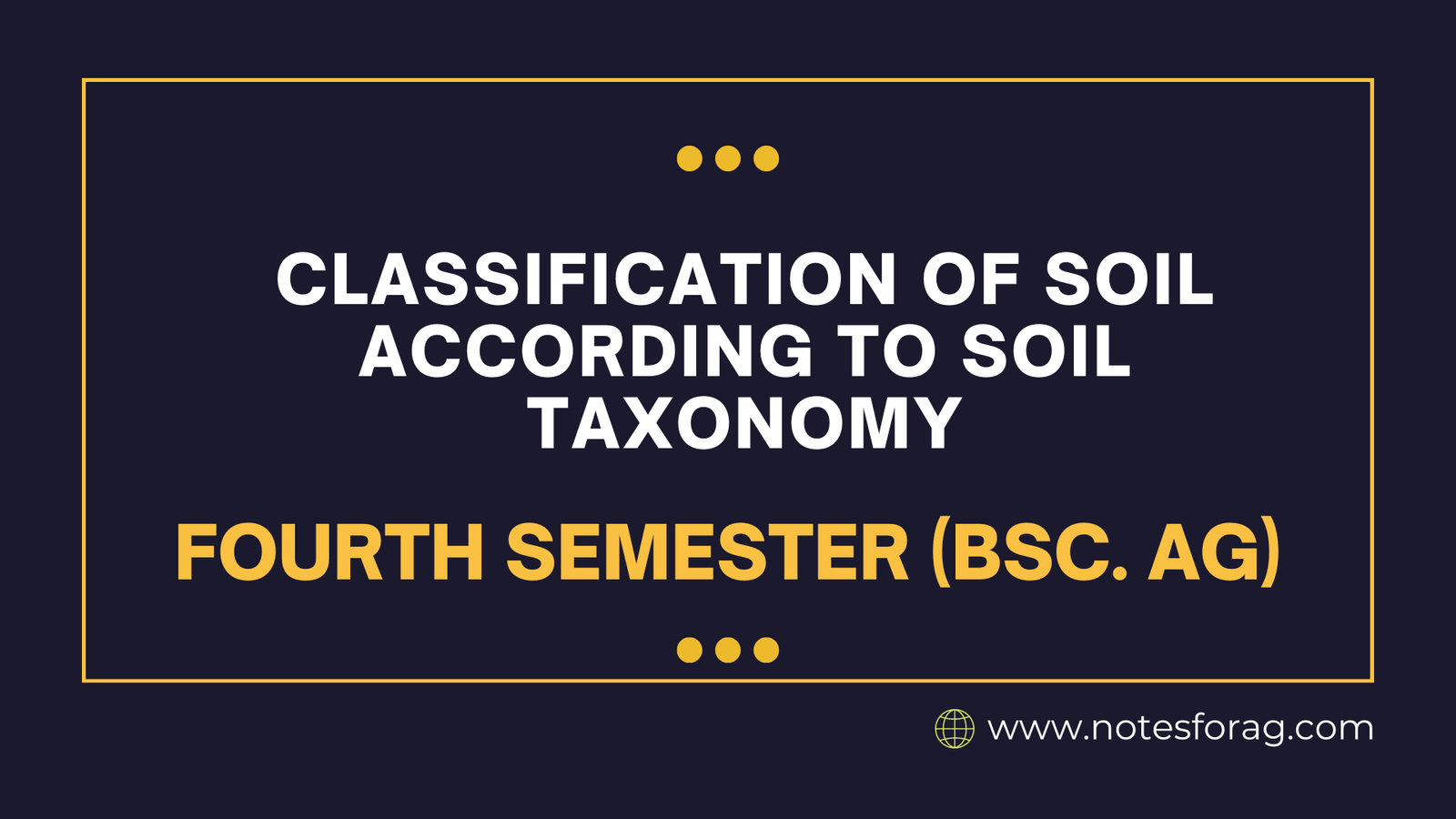Soil Taxonomy is the official soil classification system used in the United States. It’s a hierarchical system that categorizes soils based on their physical, chemical, and biological properties.
Table of Contents
The National Cooperative Soil Survey in the United States, as well as many other countries, uses the system of soil taxonomy for mapping and classifying soils. Six categories, or levels, make up the hierarchical soil taxonomy system: order, suborder, great group, subgroup, family, and series. Soil taxonomy is a morphogenetic system of classifying soil that uses diagnostic features and strata to infer the formation and genesis routes of soil. It gives names to taxonomic classes using a special mnemonic method derived from Greek, Latin, or other root words. Small-scale maps exhibiting patterns of soil geography for continents or nations are a good fit for soil orders and suborders.

Here’s a breakdown of the major levels in the soil taxonomy system.
Soil Taxonomy System
- Order: The broadest level, based on general properties like the presence of diagnostic horizons (layers within the soil profile). There are 12 soil orders in the system.
- Suborder: Groups soils within an order based on more specific properties like climate, drainage, or the presence of certain minerals.
- Great Group: Focuses on the presence or absence of specific diagnostic horizons and their characteristics.
- Subgroup: Further differentiates soils within a Great Group based on the degree of development of diagnostic horizons and other properties.
- Family: Categorizes soils based on physical properties like texture, mineralogy, and temperature regime.
- Series: The most specific level, grouping soils with similar characteristics, including profile development, texture, and color.
Example:
Let’s take a look at a soil classified as Alfisol (Order) Aquoll (Suborder) Haplaquoll (Great Group) Typic Haplaquoll (Subgroup):
- Alfisol: Indicates a soil with a moderately developed profile and a high base saturation.
- Aquoll: Suggests a soil that is frequently wet due to its location near a water source.
- Haplaquoll: Defines the specific type of diagnostic horizon present in the soil.
- Typic Haplaquoll: Identifies the soil based on the degree of horizon development and other characteristics.
Benefits of Soil Taxonomy
- Consistent and standardized classification: Allows for clear communication among scientists and practitioners.
- Predictive power: Helps understand soil properties and behavior based on classification.
- Foundation for soil management practices: Provides information for effective land use and conservation efforts.
It’s crucial to remember that the system of soil taxonomy is intricate. A thorough understanding of soil science and the specialised vocabulary employed within the system are necessary to comprehend the classification procedure.
FAO/UNESCO System of Soil Classification
The FAO/UNESCO system of soil classification was a significant historical step towards a standardized global approach to classifying soils. Developed in the 1960s, it played a crucial role in creating the first FAO/UNESCO Soil Map of the World published in 1974.

Here’s a closer look at the FAO/UNESCO system:
- Monocategorical Classification: With 26 “soil units” that represented broad groups of soils based on dominating characteristics, it was a single-level system. This attempted to create a globe map with simplicity and ease of usage in mind.
- Emphasis on Field Description: The system was mostly dependent on field observations and descriptions of the colour, texture, structure, and drainage of the soil. This rendered it feasible for extensive mapping in various locations.
- Adaptability: While designed for broad classification, the system offered the flexibility to include additional phases for texture, slope, and management practices.
Limitations of the FAO/UNESCO System
- Overly Broad: The single-level system lacked the detail needed for specific soil characterization.
- Limited Predictive Power: It wasn’t as effective as more modern systems like Soil Taxonomy in predicting soil behavior and suitability for different land uses.
Legacy and Impact
- Paved the Way: Despite its limitations, the FAO/UNESCO system played a vital role in establishing a common language for understanding soils internationally.
- Foundation for Further Development: It laid the groundwork for the development of more comprehensive classification systems like the World Reference Base for Soil Resources (WRB) introduced in 1998 by the FAO.
WRB Superseded the FAO/UNESCO System
While the FAO/UNESCO system is no longer the primary international standard, it remains valuable for understanding historical soil classification efforts and interpreting older soil maps and reports that reference it.
By studying Soil Taxonomy, you can gain a valuable understanding of the diversity and properties of soils, which is crucial for sustainable land management and environmental stewardship.
Frequently Asked Question (FAQs)
What are the five elements of soil genesis?
Scientists attribute soil formation to the following factors: Parent material, climate, biota (organisms), topography and time.
What is Genesis in agriculture?
Genesis provides the tool for agricultural transition, linking agricultural and environmental performance to agricultural practices, and thus helping farmers to achieve their transition with high value-added facts.
What are the losses in soil Genesis?
Soil genesis or pedogenesis is the study of the origin and formation of soil.
Related Article

